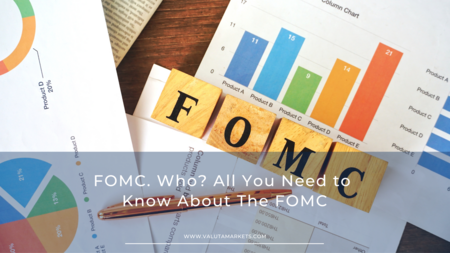The Federal Open Market Committee (FOMC) is a body of the Federal Reserve System responsible for monetary policymaking. FOMC determines the direction of money, particularly by directing and managing open market operations OMOs.
The committee comprises 12 members, with 7 of the members being board governors and five of the members being presidents of Reserve Bank. The voting members comprise a chair, who also chairs the Federal Reserve Board of Governors, with the other six governors appointed by the congress.
There is also a vice-chair, president of the Federal Reserve Bank of New York, and four other regional Federal Reserve Bank presidents.
Functions of the Federal Open Market Committee
The critical functions of this body of the Federal Reserve System include:
1. Control of the monetary policy
FOMC controls the three essential monetary tools: discount rate, open market operations, and discount rate. FOMC is tasked with the open market operations, while the Federal Reserve Board of Governors is responsible for the reserve requirements and discount rate.
Open market operations are the sale and purchase of securities in the open market by a central bank. Statements and decisions made by FOMC affect the interest rates for several forms of credit., including home loans.
Open market operations support the Fed to achieve its two mandates: promote stable prices and maximize employment by influencing reserves supply in the banking system. This way, the interest rate is affected.
A good demonstration of FOMC controlling open market operations is when the committee wants the interest rate to increase. FOMC will direct the Trading Desk to participate in open market operations such as selling bank securities. The effect will be banks having fewer reserves to lend.
What does this mean? There will be increased pressure on a wide range of interest rates, such as the federal funds rate, resulting in a lot of savings. On the other hand, if the FOMC wants to see a decrease in interest rate. The Trading Desk will be directed to purchase government securities, increasing reserves in the banking system. This puts downward pressure on the interest rates, increasing borrowing.
2. Federal funds target rate
The federal funds rate is the rate at which banks and other depository institutions such as credit unions charge other institutions for lending on an uncollateralized basis from their reserve balances. The two federal funds rate type include the federal funds target rate and the federal funds effective rate.
FOMC sets the federal funds target rate, which is the rate at which financial institutions can borrow and lend from each other. If the FOMC wants the rate higher, it will set a high target rate range, triggering the banks to increase their lending rates. When the FOMC sets the target rate lower, financial institutions are forced to lower their lending rates, allowing them to borrow more from each other.
The change in federal funds target rate affects the cost of borrowing, which has a ripple effect on the demand for goods and services.
3. Response to inflation and deflation
FOMC’s function is to respond to inflation or deflation by adjusting the federal funds target rate, which is within its mandate to achieve price stability.
Key Federal Open Market Committee Operations
Here are the fundamental operations that allow the committee to take part in monetary policymaking.
1. Open market operations
Through open market operations, the FOMC directs the purchase or sale of U.S. Treasury securities. This move affects the liquidity of the domestic currency, more so in the open markets; FOMC can reduce or increase the liquidity of the currency.
Other market operations the FOMC can control are taking part in repurchasing agreements with financial institutions and entering into secured lending transactions with a commercial bank. Essentially, what happens is the central bank takes an asset from a commercial bank and leaves a cash deposit. Through the transactions, liquidity is provided, and short-term interest rates and money supply are impacted.
2. Monetary policy
The FOMC implements its mandate through contractionary or expansionary monetary policy alongside the Federal Reserve. To reduce unemployment and enhance economic growth, the two bodies employ expansionary monetary policy such as reducing the federal funds target rate or increasing the money supply. In some cases, the committee can implement both strategies.
An increase in money supply is achieved by buying securities in the open market or printing more money. However, the strategies can lead to inflation. When it gets to a point where it is high, the two bodies implement contractionary monetary policy such as increasing the federal funds’ target rate and selling securities in the open market.
Take Away
The Federal Open Market Committee (FOMC) is mandated with conducting monetary policy by adjusting short-term interest rates to respond to changes in the economy. FOMC has for over a decade leveraged large-scale purchases of the treasury securities to impact the interest rates to improve economic conditions.

